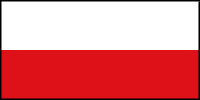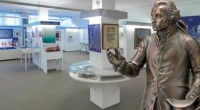Everard William Kant. Kants in Scottland
According to Kant the characteristics of our thought are the assembling of various perceptions out of which we make classifications and qualities as we put them together. We make no judgement on what we see but simply note their similarity .To explain our experiences therefore we note the uniformity, but it represents something more than we see. End of my attempt to transfer his thoughts to explain my use of visual aid.
This piece of lace, I ask you to note its validity as such, by the intricacies, patterns and repeats. The threads wind in and out, from left to right up and down, knotted and composed by the eye of the worker and the finished piece viewed by ourselves.
In Scotland her history like that of every other country East or West, North or South is taken up with Wars, battles and intrigues. In course of time peace may be established, but still we do not all perceive the same. Briefly I would start at the death of King David in 1371. He had no children so his nearest heir was Robert the steward who reigned 1371-1390. He was the first of the Stewarts who reigned over Scotland over 300 years. One of the first things Robert accomplished was a new treaty with France, by which both countries agreed to defend one another against England. The King of France eventually in the year 1384 sent 2000 Frenchmen with 1500 suits of Armour and a great deal of money to Scotland. A french writer who lived in Scotland at the time Froissait wrote some interesting points down. From him we learn that they had no Iron to shoe horses, no leather for saddles, harness or bridles. They had little fancy clothing. All of these things had to be sent across the water from France and the Low Countries.
Surprise then when the French arrived to find poverty and a desperate need for european influences. One these influences was the arrival of a Lace making Flemish family.
This family of Cant or Kant arrived in Scotland in the 14th cent. The Flemish word for Lace is Cant or with a K.Hence it was believed in Scotland that their craftmanship, precision and detail had a permanent influence in Scottish Trades & Professions. Unfortunately Lace-making is no longer required except for decorative clothing or museums. This is now machine-made material, A few experienced Bobbin lace makers still carry out the craft. It has been suggested that they were employed to make lace at the court of the King which gave them a position and perhaps even some land. In my last parish at Kinghorn in Fife, which was very important as the King had a palace and hunting lodges nearby. On the 19th March 1286 the King Alexander III died in Kinghorn one stormy night on his way home on horse-back. This was the middle ages, dark times and undiscovered crimes. Little is known about the Cant family at this time, but one small piece of the jig-saw I found in Kinghorn was a small hill within site of my home or Manse was called CANT’S hill and near-bye were the ruins of a Fortalice or Castle which was said to be a 14th cent foundation.
Nothing is really known of the family until the Reformation period 16th cent. At this time more than a third of the wealth of Scotland was in the hands of the Church, Where the Bishops and Abbots lived in luxury compared to the people, of whom the majority were living in poverty. This situation was one of the reasons for the Reformation, plus the return of John Knox from exile on the Continent in 1559.The same year there were protests uprisings. In 1560 The first Assembly of the Church of Scotland was held as the established Kirk religion in Scotland.
This was for the folk of Scotland a time of change, uncertainty and insecurity. The people left for other lands, many for the countries with which they traded in Holland, Germany, the Baltic coastline and some as Soldiers of Fortune to work and fight for payment by new lords. All happened a long time ago, that is how all the best stories begin. None better than the one held by our family that one became a soldier in Danzig and there found a new life & wife.
There is much scepticism held in academic circles of Immanual Kant’s own belief that his paternal grandfather or great grandfather was an immigrant from Scotland. I would imagine the situation was not unlike that which pertains today in Europe and throughout the world. Individuals and groups leave the place of birth in search for better, happier opportunities. Perhaps then the thread was being woven into another new pattern which by now is extended far and wide from Europe to Canada, from Tashkent to South America, from Russia to Australasia.
Back in Scotland other Cant’s were however making a name for themselves. Several of them carried the Christian name Andrew Cant (Andreas)this in a way became the family name for a male child. My own father was Charles Andrew and my son is Christopher Andrew. The fact is that many of Scottish Pastors in the 17th cent were Andrew Cant. Perhaps the most famous was the pastor of Pitsligo a fishing community near Fraserburgh in Aberdeenshire. This Andre was born around 1590 and came to the attention of authorities first when the congregation in Edinburgh wanted him to be their Pastor. The King and the court did not want him to be appointed. In 1633 he was called to be paste at Pitsligo (which is ancient Pictish name.) Andrew Cant opposed the desire of King Charles to establish Episcopacy in Scotland and to bring the Scottis Kirk under the thrall of the Church of England. He was a self proclaimed chair ion of the Covenants. After the signing of the National Covenant on 28th Feb 1638 in the Greyfriars Kirk, Edinburgh. He was appointed with two other Pastor and three Scottish Nobles (Montrose, Kinghorne & Cowper) to bring the folk of the North & North East to agreement with the Presbyterian cause. However the Aberdeen Clergy kept them out of the churches and they had to speak outside in the open.
In Nov 1638 Rev Andrew Cant was present at the General Assembly in Glasgow when he helped to abolish Bishops and Prelacy.
Later he was inducted as Pastor of the church and people of Newbattle near Edinburgh. In the year 1640 he was appointed Chaplain to the Covenanting Army traveling with them around the country. It was also in the same year he was called to be pastor at St.Nicholas Kirk, Aberdeen, where he now lies buried in the graveyard of the kirk and city. He was an eminent and resolute preacher and pastor known by all as “Canting Andrew” because of the affected manner and drone of speech. He died 30th April 1663. By his wife Margaret Irvine: he left a family of two sons and two daughters. His daughter Sarah met and married Alexander Jaffray of Aberdeen. Descendants of whom are still living in the area.(One of them had a very interesting story, for another time).
According to belief his son Andrew graduated M.A. in 1644 at the University of Aberdeen and afterwards taught there for many years before coming to the City of Edinburgh where he was introduced as the minister of Trinity College Church. In 1675 he was made Principal of the College on the death of Principal Colvill. Along with this position he was Minister of the East Kirk of St. Giles. He had the House and Yards of the former principal, altogether giving him for the time a very comfortable settlement. It was said he was also a very excellent preacher and learned man with a vast library. He held the post of Principal until 1685.
Published works: Theses Philosophice; De Libero Arbitrio; Oratio de Concordia Theologorum et Discordia.
Another Andrew Cant matriculated at Edinburgh College in 1630 and graduated M.A. three years later. We do not know if this is the same minister who was later deprived of his charge as he held Episcopalian ideas, during the revolt in 1690,however if it is the same man he was consecrated a Bishop of the Episcopalian Church in the year 1722.
We could go on introducing more Cants at this time, but I think I must move forward to the present and bring it up to date and to a conclusion. How did the C become a K?. The tradition held in the family was that not only were there links with the trading of material, leather & skins, but also people. It is believed that a brother of Hans or Richard his father had crossed the sea to Scotland for trading or training purposes. Some even consider that a brother of Immanuel was sent over, but no more was heard from or about him. Whatever the facts I learned that my great-grandfather for some reason desire to change the K back to the more common C. My Grandfather William after whom I was named was resolute about the K. In conclusion my late father Charles Andrew who was born on Burns Day 25th Jan 1889 was one of six sons & two daughters, but he was the only one that married. My own son Christopher Andrew has no children. So we find the line of Kants in Scotland shrinking but there is hope in a second cousin who has two sons and a daughter so the Kants in Scotland are few but part of the clan which stretches from East to West and North to South covering the globe. Here I stand Everard William Kant. I can do no other, retired but active and delighted to be here on this very important date.
This article was first published in collection of articles «Kant zwischen West und Ost»:
Kant, Everard William. Kants in Scottland// Kant zwischen West und Ost. Zum Gedenken an Kants 200. Todestag und 280. Geburtstag. Hrsg. Von Prof. Dr. Wladimir Bryuschinkin. Bd.2. Kaliningrad, 2005. S. 315 – 318.




